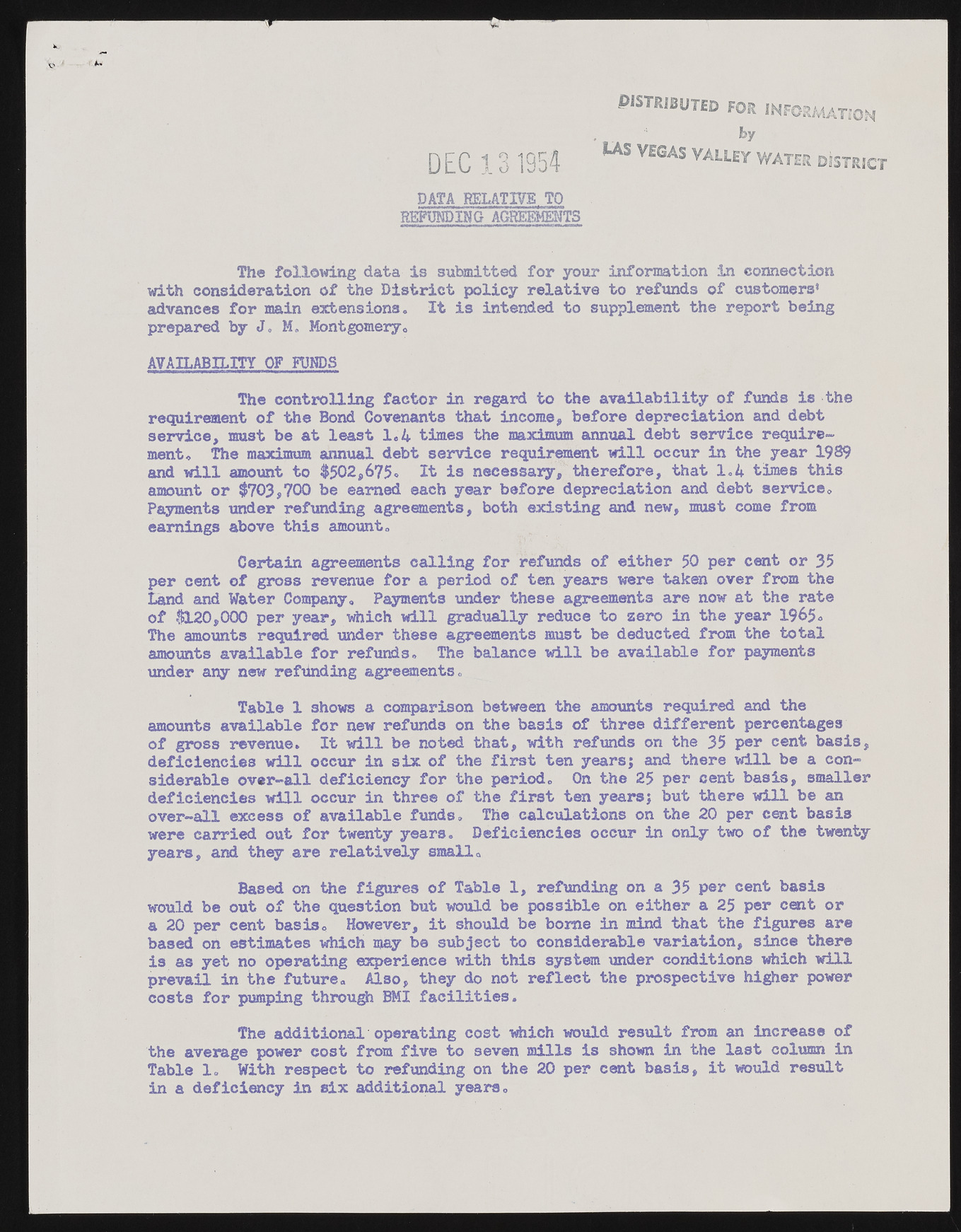Copyright & Fair-use Agreement
UNLV Special Collections provides copies of materials to facilitate private study, scholarship, or research. Material not in the public domain may be used according to fair use of copyrighted materials as defined by copyright law. Please cite us.
Please note that UNLV may not own the copyright to these materials and cannot provide permission to publish or distribute materials when UNLV is not the copyright holder. The user is solely responsible for determining the copyright status of materials and obtaining permission to use material from the copyright holder and for determining whether any permissions relating to any other rights are necessary for the intended use, and for obtaining all required permissions beyond that allowed by fair use.
Read more about our reproduction and use policy.
I agree.Information
Digital ID
Permalink
Details
More Info
Rights
Digital Provenance
Publisher
Transcription
.distributed for information "l_A by D E C 1 3 1954 u s VEGAS VALLEY water district DATA RELATIVE TO REFUNDING AGREEMENTS The following data is submitted for your information in connection with consideration of the District policy relative to refunds of customers* advances for main extensions. It is intended to supplement the report being prepared by J, M„ Montgomery. AVAILABILITY OF FUNDS The controlling factor in regard to the availability of funds is the requirement of the Bond Covenants that income, before depreciation and debt service, must be at least 1.4 times the maximum annual debt service requirement. The maximum annual debt service requirement will occur in the year 1989 and will amount to $502,675* It is necessary, therefore, that 1.4 times this amount or $703,700 be earned each year before depreciation and debt service. Payments under refunding agreements, both existing and new, must come from earnings above this amount. Certain agreements calling for refunds of either 50 per cent or 35 per cent of gross revenue for a period of ten years were taken over from the Land and Water Company. Payments under these agreements are now at the rate of $120,000 per year, which will gradually reduce to zero in the year 1965. The amounts required under these agreements must be deducted from the total amounts available for refunds. The balance will be available for payments under any new refunding agreements. Table 1 shows a comparison between the amounts required and the amounts available for new refunds on the basis of three different percentages of gross revenue. It will be noted that, with refunds on the 35 per cent basis, deficiencies will occur in six of the first ten years; and there will be a considerable over-all deficiency for the period. On the 25 per cent basis, smaller deficiencies will occur in three of the first ten years; but there will be an over-all excess of available funds. The calculations on the 20 per cent basis were carried out for twenty years. Deficiencies occur in only two of the twenty years, and they are relatively small. Based on the figures of Table 1, refunding on a 35 per cent basis would be out of the question but would be possible on either a 25 per cent or a 20 per cent basis. However, it should be borne in mind that the figures are based on estimates which may be subject to considerable variation, since there is as yet no operating experience with this system under conditions which will prevail in the future. Also, they do not reflect the prospective higher power costs for pumping through BMI facilities. The additional operating cost which would result from an increase of the average power cost from five to seven mills is shown in the last column in Table 1. With respect to refunding on the 20 per cent basis, it would result in a deficiency in six additional years.

